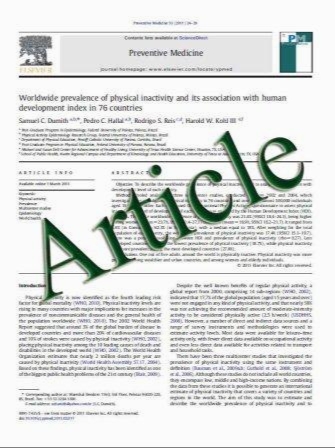Association between vitamin K intake from fermented soybeans, natto, and bone mineral density in elderly Japanese men: the Fujiwara-kyo Osteoporosis Risk in Men (FORMEN) study
- نوع فایل : کتاب
- زبان : انگلیسی
- مؤلف : Y. Fujita & M. Iki & J. Tamaki & K. Kouda & A. Yura & E. Kadowaki & Y. Sato & J.-S. Moon & K. Tomioka & N. Okamoto & N. Kurumatani
- چاپ و سال / کشور: 2011
Description
Summary A cross-sectional analysis of 1,662 community dwelling elderly Japanese men suggested that habitual natto intake was significantly associated with higher bone mineral density (BMD). When adjustment was made for undercarboxylated osteocalcin levels, this association was insignificant, showing the natto.bone association to be primarily mediated by vitamin K. Introduction Low vitamin K intake is associated with an increased risk of hip fracture, but reports have been inconsistent on its effect on BMD. Our first aim was to examine the association between BMD and intake of fermented soybeans, natto, which contain vitamin K1 (20 ƒتg/pack) and K2 (380 ƒتg/pack). Our second aim was to examine the association between undercarboxylated osteocalcin (ucOC), a biomarker of vitamin K intake, and BMD to evaluate the role of vitamin K in this association. Methods Of the Japanese men aged .65 years who participated in the baseline survey of the Fujiwara-kyo Osteoporosis Risk in Men study, 1,662 men without diseases or medications known to affect bone metabolism were examined for associations between self-reported natto intake or serum ucOC levels with lumbar spine or hip BMD. Results The subjects with greater intake of natto showed significantly lower level of serum ucOC. Analysis after adjustment for confounding variables showed an association of greater intake of natto with both significantly higher BMD and lower risk of low BMD (T-score<.1 SD) at the total hip and femoral neck. This association became insignificant after further adjustment for ucOC level. Conclusion Habitual intake of natto was associated with a beneficial effect on bone health in elderly men, and this association is primarily due to vitamin K content of natto, although the lack of information on dietary nutrient intake, including vitamin K1 and K2, prevented us from further examining the association.
Osteoporos Int DOI 10.1007/s00198-011-1594-1 Received: 2 June 2010 / Accepted: 3 February 2011


